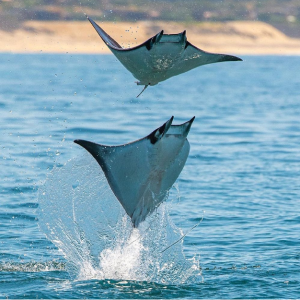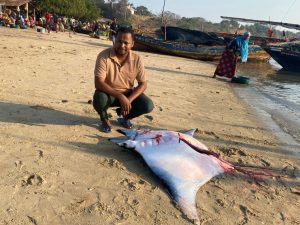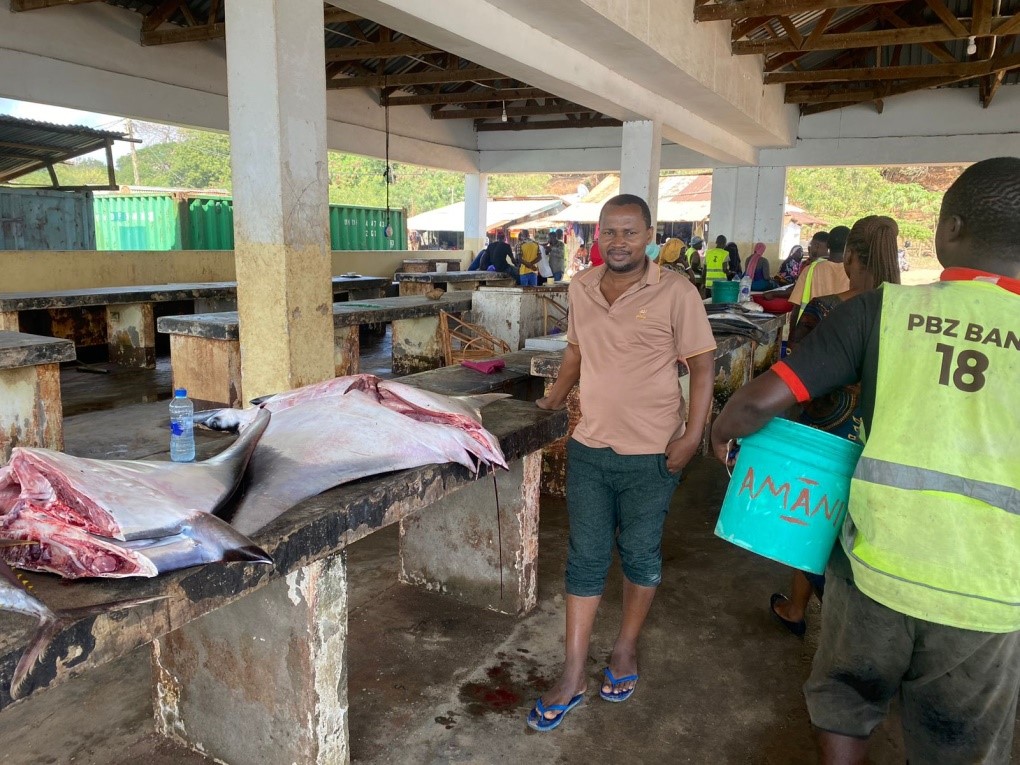By Cyrus Rumisha
Devil rays, belonging to the family Mobulidae, are renowned for their elegant swimming and impressive acrobatics, often leaping out of the water in stunning displays due to their distinctive wing-like pectoral fins. These magnificent creatures not only enhance the beauty of our oceans but also play a vital ecological role as filter feeders, consuming plankton and small fish. This activity contributes to nutrient cycling and supports the health of oceanic food webs. However, devil ray populations in the Southwestern Indian Ocean (SWIO) are in alarming decline due to overexploitation, driven by high international demand for their products. Despite ongoing local and international conservation efforts, insufficient information on their genetic population structure and uncertainties in their taxonomy complicate effective conservation strategies.

Devil rays making aerial jumps (Photo by Caine Delacy, © Baja Shark Experience)
A recent study titled “Devils in Distress: Insights into the Composition and Genetic Population Structure of Devil Rays Landed in the Southwestern Indian Ocean” by Rumisha et al. (2024) analyzed 120 tissue samples from devil rays landed in the SWIO. The study identified four species of devil rays: Mobula mobular, M. kuhlii, M. tarapacana, and the endangered M. thurstoni, which accounted for over 70% of the specimens caught. Despite their endangered status according to the IUCN Red List, these species lack national protection in Tanzania and other SWIO countries. Additionally, the study confirmed that M. mobular and M. japanica are indeed synonyms of the same species, reinforcing the need for unified conservation measures for these species. Limited genetic connectivity was also found among M. thurstoni populations in the SWIO, the Eastern Indian Ocean (EIO), and Brazil, indicating that region-specific conservation strategies are necessary.

A devil ray gutted after landing
To effectively advocate for the protection of devil rays, the study calls for a comprehensive revision of Tanzania fishing regulations to explicitly include protections for these species, addressing current regulatory gaps that leave them vulnerable to overfishing. Furthermore, targeted conservation strategies tailored to the specific threats faced by devil ray populations in the SWIO and beyond are essential. Furthermore, international cooperation is crucial to protect migratory routes, as devil rays traverse multiple jurisdictions. Raising public awareness about the ecological significance of devil rays and the urgent need for their conservation is crucial for fostering community support and promoting sustainable practices. By taking these steps, we can help secure a future for devil rays and preserve the biodiversity of our oceans.

Dr. Cyrus Rumisha observing devil rays sold at one of the fish markets in the SWIO
This study was part of a research project funded by the Save Our Seas Foundation, titled “Building Capacity to Foster Sustainable Management of Threatened Mobulid Rays in East Africa” (https://saveourseas.com/project/capacity-for-community-conservation-in-east-africa/).
For more information, contact:
Cyrus Rumisha
Department of Animal, Aquaculture, and Range Sciences
Sokoine University of Agriculture
Morogoro, Tanzania
Email: rumisha@sua.ac.tz




